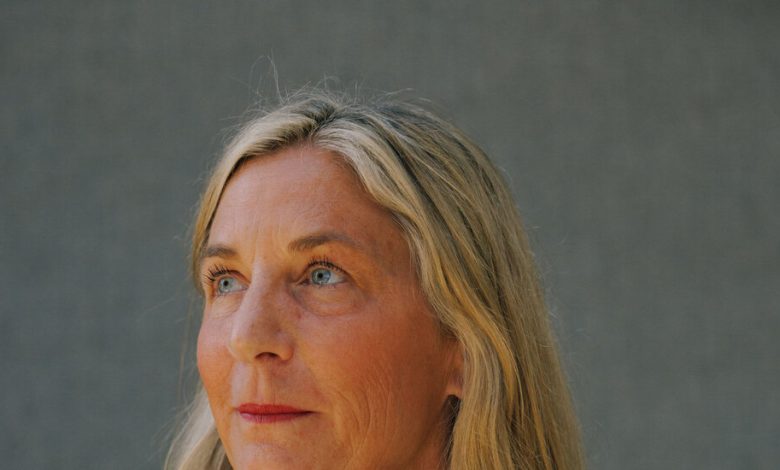The Nation’s Obsession With True Crime Meets a Mother’s Grief

Stacy Chapin walked into a conference ballroom at the annual CrimeCon gathering in Orlando, Fla., and let out a gasp. Nearly 3,000 people were packed inside, all to hear a college professor from Alabama conduct a “forensic analysis” of how Ms. Chapin’s son and three of his college friends had been brutally murdered in Idaho last year.
Ms. Chapin backed herself into an alcove to observe the discussion, muttering as the speaker mispronounced the name of her son’s girlfriend, who was also one of the victims, then botched the description of the landscape around the crime scene. The audience was captivated, but within minutes Ms. Chapin was quietly pushing herself out a side door.
“Why does that person get to talk about my kid in front of all those people?” Ms. Chapin whispered in the hallway. Then she wondered: “Should I go up on the stage?”
Ten months ago, Ms. Chapin was thrust into the center of the nation’s obsession with true crime, as armies of podcast listeners, internet commentators and amateur sleuths were consumed by the mystery of how Ethan Chapin and three other University of Idaho students had been stabbed to death late one night in a house near campus. Now she found herself navigating an unfamiliar world where she was an unwitting celebrity, searching for a way to harness the fervor for something good.
She arrived as a guest of CrimeCon, where — after paying for tickets that start at $349 — attendees could measure blood spatter, analyze the drawings of a serial killer, cheer their crime-solving heroes and absorb the gory details of notorious rapes and murders.
The annual conference, which this year drew 5,000 people from all 50 states, capitalizes on what has been a breakneck level of growth in the true crime genre: Last week, of the 20 top podcasts on the Apple platform, more than half were related to true crime.
Some attendees described their fascination with criminal minds; others said they felt deep empathy with the victims, and were lured by the enticing possibility that someone asking the right questions or unearthing a missing digital clue could help bring justice to a stricken family. Relatives of some of those families also signed up, posting materials and sharing stories, overjoyed that people and podcasters were eager to listen.
In the exhibition hall, businesses vied for attention, one offering true-crime branded coffee, as the crackle of someone testing a stun gun was heard from a table nearby. A crime-scene cleaning company had set up a bloodied cardboard box, next to a booth where attendees could get photos of themselves against a perp-lineup backdrop. Ms. Chapin flinched and turned away as a television screen flashed images of the man accused of killing her son.
Attendees had the chance to mingle with the stars of the genre: A YouTuber grabbed a selfie with Camille Vasquez, the lawyer known for her recent work representing the actor Johnny Depp. Dozens lined up to meet the former cold case detective, Paul Holes. The conference’s welcome party featured Creighton Waters — the prosecutor who led the murder case against the South Carolina lawyer Alex Murdaugh — doing a rendition of “Brown-Eyed Girl” on guitar.
Ms. Chapin had never been a follower of true crime nor, frankly, understood its appeal. Over the past year, she has largely avoided most of the news coverage and public discussion of her son’s murder, but in the early days of the case she got a glimpse into the power of the true crime community to galvanize and organize — sometimes in alarming ways.

Stacy Chapin signed books for supporters and fans at CrimeCon.Credit…James Jackman for The New York Times
As word of her son’s case spread via a broad network of YouTube channels, TikTok personalities and Facebook groups, true crime sleuths were captivated by the Idaho mystery, one where a killer had managed to fatally stab four people on two floors of a rental home before exiting into the night. With no suspects emerging and police pleading for tips, thousands of online sleuths went to work.
They uploaded maps of the neighborhood and floor plans of the house, and analyzed photos, including one that some thought revealed blood seeping down its outer walls. They scoured social media interactions, freeze-framing a Twitch livestream video that showed two of the victims stopping at a food truck hours before they were killed. They proposed a series of theories: that an ex-boyfriend had committed the crime, or a roommate of the victims, or a neighbor who had been doing interviews, or a man in a hoodie who was seen in the crowd in the Twitch video.
Some of the “suspects” — college students whose only real connection to the crime was their friendship with the victims, and their own keen sense of loss — became true crime villains overnight. Ms. Chapin recalled her fury upon learning that some had been speculating that her son might have carried out the atrocity as part of a murder-suicide plan.
Even after a real suspect was arrested — Bryan Kohberger, a Ph.D. student in criminology at a nearby university — the sleuths continued to speculate, offering alternative theories despite DNA evidence and cellphone tracking data described by prosecutors as linking Mr. Kohberger to the crime.
For Ms. Chapin and much of the university community in the small town of Moscow, Idaho, the killing had left a wave of shock and grief in its wake.
At CrimeCon, she hoped her presence would help people remember what had been lost. She also wanted to connect with other victim families who were looking to find community and build support for a foundation that will award college scholarships in her son’s honor.
She had not even had a chance to pick up her badge at the conference before a woman wearing a “Basically a Detective” T-shirt — on sale in the gift shop — approached Ms. Chapin to give her a tearful hug, thanking her for her grace and expressing sympathy for her loss.
At a meeting of family members of crime victims, she met relatives of Gabby Petito, who was killed by her fiancé in 2021 during a cross-country road trip. It was a case where true crime aficionados had found a chance to shine: Ms. Petito’s body was found after mass attention to the family’s pleas for help on social media resulted in thousands of tips.
All in all, Ms. Chapin said she had found earnest support and people wanting to help. The convention sold copies of her children’s book about Ethan, “The Boy Who Wore Blue,” written after his death. She mingled with journalists, to help tell her son’s story.
Four sessions at the conference were dedicated at least in part to discussing the Idaho case. As Ms. Chapin stepped out of the session led by the Alabama professor, she first sought refuge in a private lounge, where she came upon CrimeCon’s founder, Kevin Balfe. She explained to him how unnerving it was to hear someone she did not know, and who lacked a full command of the case’s details, speak about the killings to such a large audience.
“There are so many people in there,” she told him. “It is shocking.”
The session, Mr. Balfe said, was one of the conference’s biggest draws. He said he had spent a lot of time trying to figure out how to present a recent crime that was of such deep interest to so many people. A court-issued gag order had prevented the usual mix of prosecutors or investigators or family members from talking about it in detail. Mr. Balfe said he had selected Joseph Scott Morgan, a professor of forensics at Jacksonville State University in Jacksonville, Ala., and host of the “Body Bags” podcast, because he was someone he trusted not to indulge in sensationalism.
Mr. Balfe said he had wondered earlier what would happen if Ms. Chapin were to visit the session during the conference.
“I wish I had called you and said, ‘Don’t go in there,’” he told her.
It was a difficult situation, Ms. Chapin conceded. As they separated, she continued to fret. Should she go back into the professor’s session, and go on the stage herself?
She walked back in. The professor was still onstage, taking questions from the audience, and speculating about how the knife sheath found at the scene with the suspect’s DNA on it might be considered at trial.
Ms. Chapin got in line at a microphone, waiting for a chance to speak, her hands clasped behind her back. Then the professor asked for her question.
“My name is Stacy Chapin, and I’m Ethan’s mom,” she began. The crowd gasped, then applauded. Some stood to take photos.
Ms. Chapin spoke briefly, her voice shaking, explaining that she wanted the crowd to know that all the positive things that people had heard about the victims were true.
“Don’t forget these kids,” she told the crowd. “They were amazing, amazing kids, in the prime of their life.”
As she departed, people surrounded her, asking for hugs, laying their hands on her, rubbing her back, sharing stories of why her son’s case had meant so much to them.
The moment, she said, was empowering. She hoped it offered people something to consider as they consumed their next true crime episode.
“It’s pure entertainment at some level,” she said. “That entertainment piece — there’s a real face behind that. There are real people behind these stories. Don’t ever forget that.”





